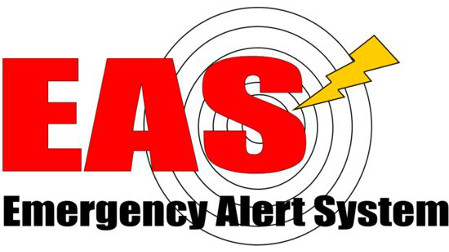Next Nationwide Emergency Test Set for August 2019
WASHINGTON—It’s time again for broadcasters to prep for a national emergency alert test.

The Federal Emergency Management Agency announced that the 2019 National Periodic Test is scheduled for Wednesday, Aug. 7 at 2:20 p.m. EDT. In case of inclement weather, a backup date has been set for Wednesday, Aug. 21.
New this year: FEMA proposes to originate the test via the National Public Warning System with a focus on Primary Entry Point facilities. According to Al Kenyon with the IPAWS Program Office, the intent of conducting the test with a focus on PEP is to determine the capability of the EAS system to deliver messages to the public in the event that dissemination via internet is not available.
This time around, the test message will also use the NPT event code and be geotargeted using the All-US (000000) geocode.
“As in past years, the national EAS test message will look and sound very much like the regular Required Monthly Test messages broadcast every month by all EAS participants, broadcast radio and television, cable, wireline service providers and direct broadcast satellite service providers,” said FEMA’s Kenyon in a letter alerting the Federal Communications Commission of its plans.
The last national test took place in October 2018 when FEMA conducted a test of both the emergency alert system and the wireless emergency alert network. That test was conducted in coordination with the FCC and National Weather Service.
The 2018 test revealed that both EAS and WEA are effective alerting tools for disseminating emergency information to the public. Based on a report issued in December 2018 by the FCC, most people reported successful receipt of the WEA test message, though some news outlets reported that WEA receipt was uneven. The test also demonstrated that IPAWS continues to deliver high-quality, effective and accessible EAS alerts.
The professional video industry's #1 source for news, trends and product and tech information. Sign up below.
As TVT's sister publication Radio World reported earlier this year, according to the FCC report, 95.5% of EAS participants successfully received the National Periodic Test code used for the test, while 91.8% successfully retransmitted the test. Those numbers are consistent with the participation levels observed in the 2017 nationwide EAS test.
The 2018 test also revealed that more participants are committed to sending the alert in both English and Spanish languages.
Broadcast organizations like the Alabama Broadcasters Association are encouraging their stations to verify two required monitor sources assigned by the State Emergency Communications Committee when it comes to relaying emergency alert messaging. The ABA asked its member stations to make a note that the 2019 test will not be fed via the IPAWS network as in the past years. “The test will be received via your state’s Primary Entry Point and relayed by the LP-1 and LP-2 stations in your area,” the organization said.
Susan Ashworth is the former editor of TV Technology. In addition to her work covering the broadcast television industry, she has served as editor of two housing finance magazines and written about topics as varied as education, radio, chess, music and sports. Outside of her life as a writer, she recently served as president of a local nonprofit organization supporting girls in baseball.

